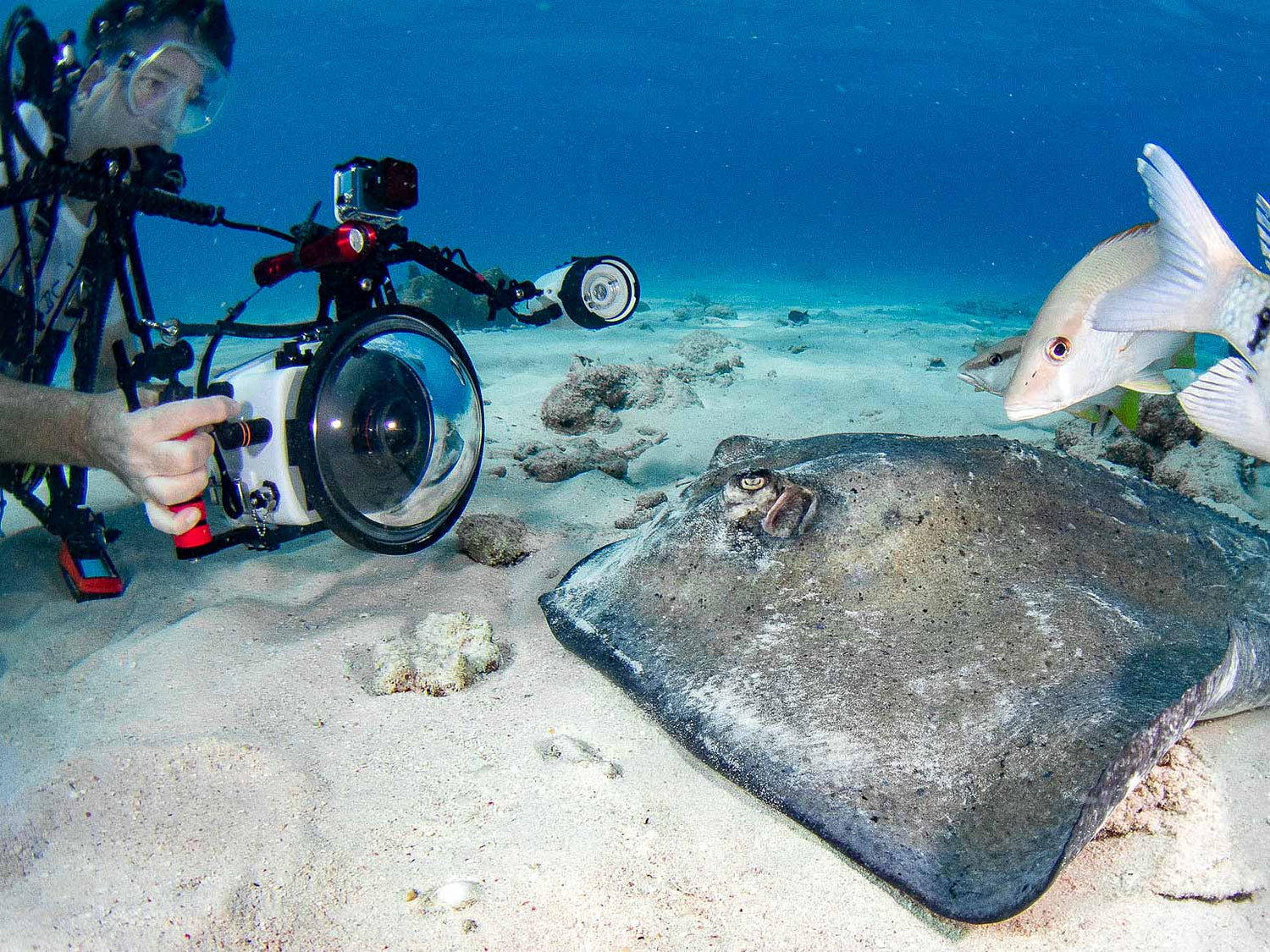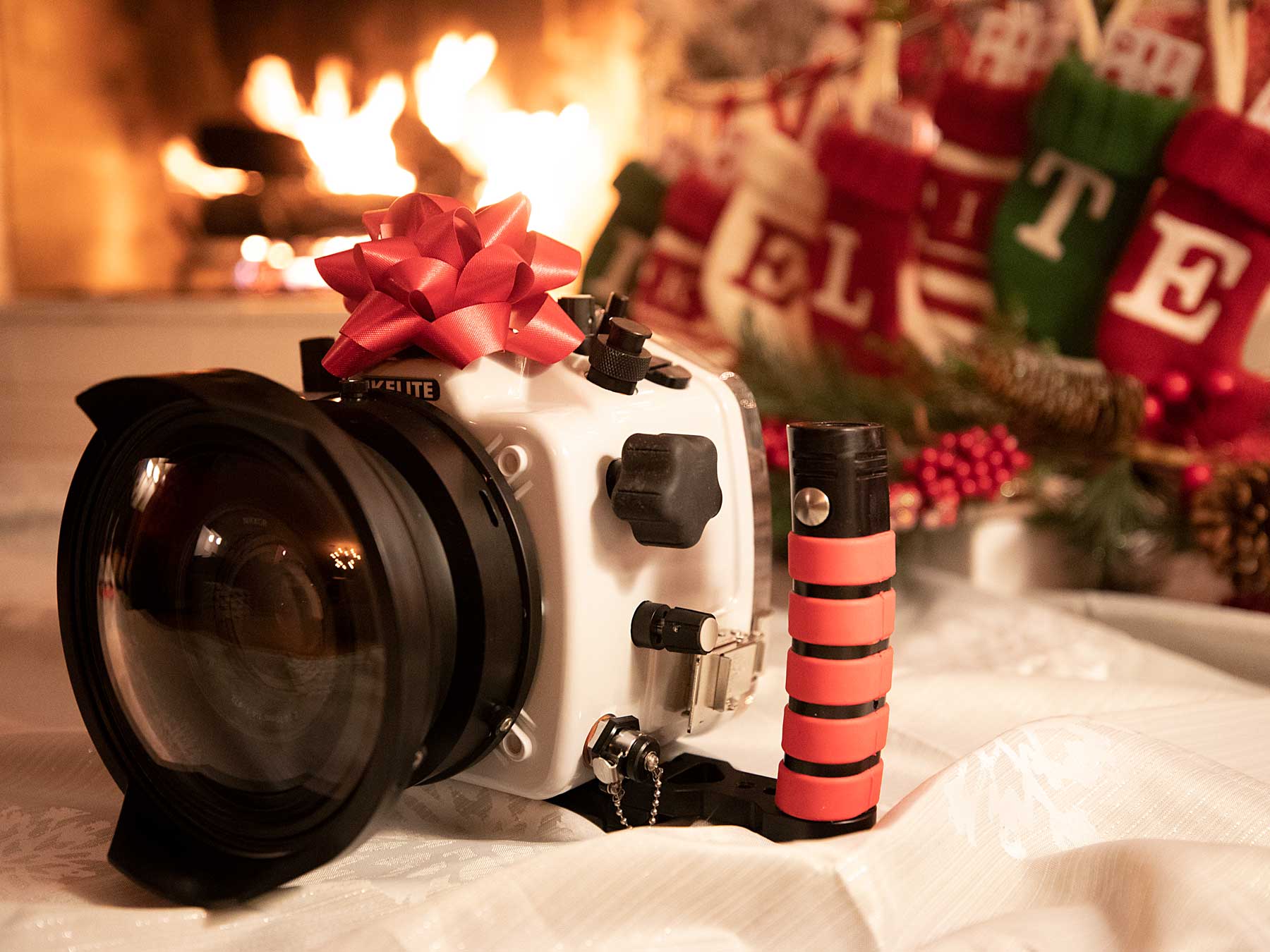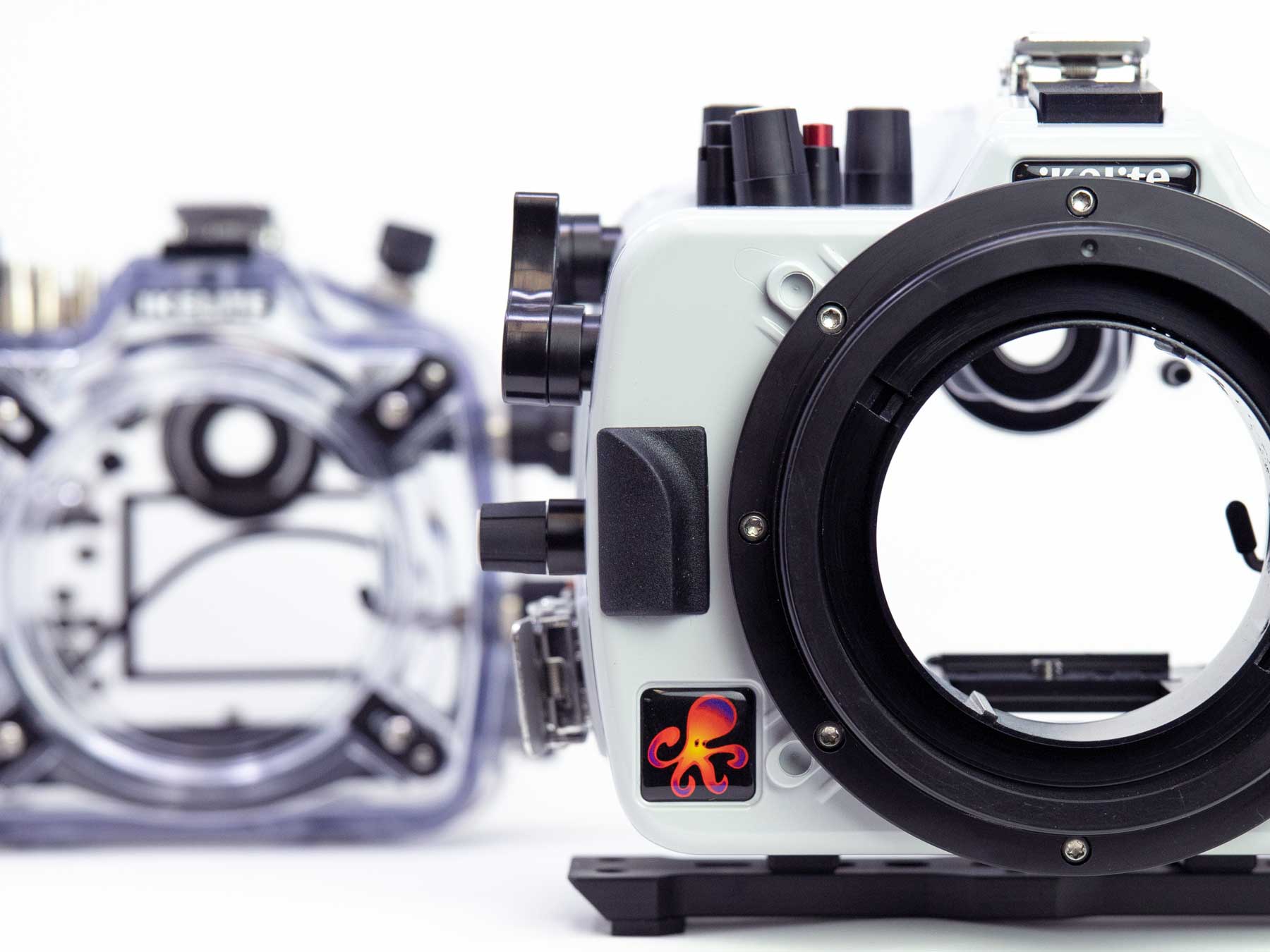By Jean Rydberg
One question we get often is "Do I need strobes?" As with all great questions, there's no one answer.
The Test
- Are you planning on shooting photos below 30-40 feet (9-12 meters) underwater?
- Are you shooting subjects in a pool from farther than 3-4 feet (1-1.2 meters) away?
- Are you shooting quick moving subjects?
- Are you shooting inside of a cave or shipwreck?
- Are you shooting at night?
If you answered "yes" to any of these questions, then strobes will greatly enhance your underwater photography.
The Visual Explanation
Let's cut right to the chase. Even on a sunny day with great visibility, you need strobes to bring out colors in your underwater photos. Without strobes everything below 30-40 feet (9-12 meters) will be completely void of reds, oranges, and purples. You will be left with images that are flat and completely blue-green in color.
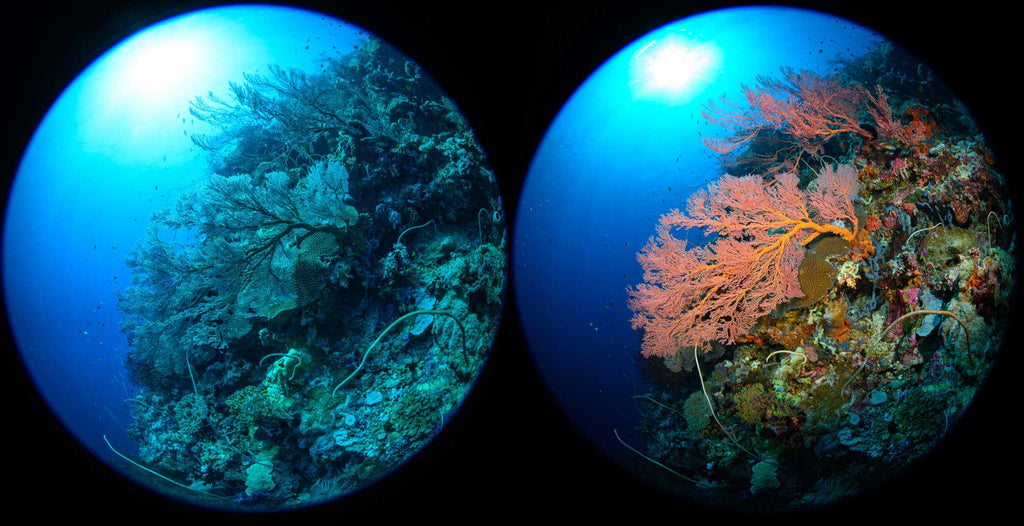
Strobes are also critical in bringing out the depth and contrast between objects underwater. Strobes can be positioned to create shadows which add dimension and highlight the featured subject.
The Scientific Explanation
Light travels through air with very little loss. With good vision or a telephoto lens, we can see things very far away relatively clearly. But think about your visibility on a foggy day. Things look grainy, gray, and difficult to make out. The light is getting absorbed and obscured by the water in the air.
The same thing is happening underwater to varying degrees depending on conditions. Even in the best conditions, color fades fast leaving everything looking a monotone blue.

Even in the best conditions you will lose visibility reds and oranges in the first 30 feet (9.2 meters) of water. You need to bring your own light - that is, a strobe - to bring them back out in your photos.
Color Correcting Filters and White Balance
There are ways to enhance the colors in your photos without adding strobes. The primary ways are through setting custom (or manual) white balance in your camera and adding accessory color correcting filters to your housing. Both of these techniques have their limits. These methods can't be used to bring out color that just isn't there due to lack of light. Remember our color loss chart? Even in the best visibility and light conditions, your images will be monochromatic beyond 40-60 feet (9-18 meters) without the use of an auxiliary light source.
Strobes boost the missing wavelengths of color, making the really important reds, oranges, and purples visible at any depth.
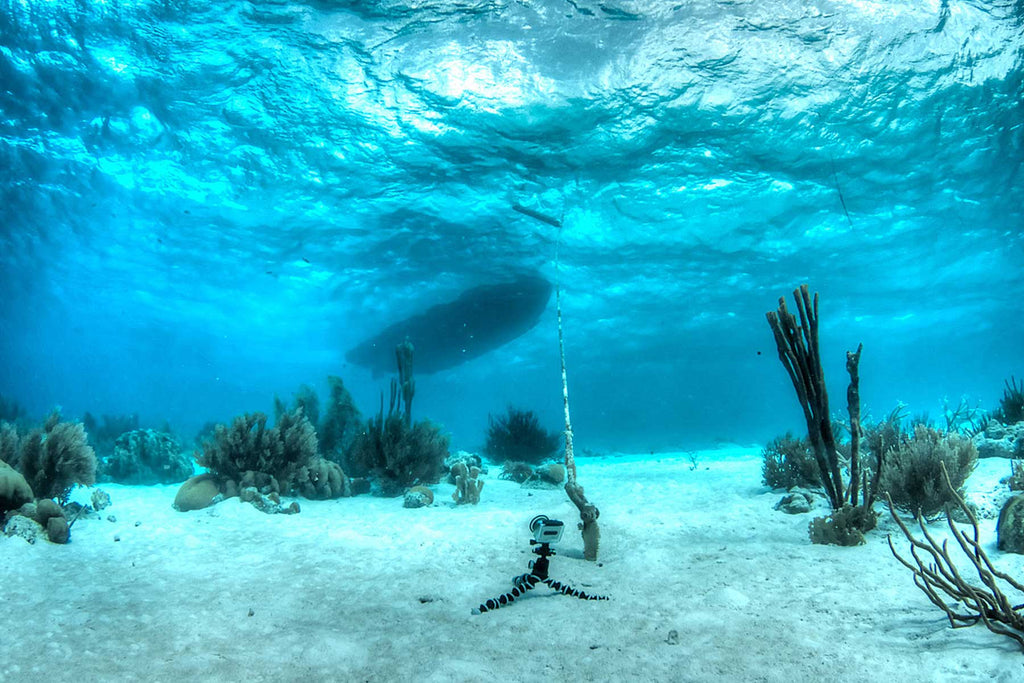
Light is absorbed over any distance- depth or separation from your subject. Even in 5-10 feet of water you won't see any color in distant objects.
Choosing a Strobe
Many people get it backwards: they invest a lot of money and travel weight in their camera and housing, and then try to cut back on their strobes thinking that smaller strobes are somehow better. In reality carrying the best strobes and the best lenses that are available will have the greatest positive impact on the quality of your underwater images.
When choosing a strobe the two most important considerations are quality of light and speed (which we call recycle time). Quality of light is important in every photo, but especially wide angle. Great wide angle photography requires a strobe with a warm color temperature to bring out the blues and vibrant colors, and exceptionally smooth beam to avoid uneven lighting of your photo.
Speed is important because most creatures underwater are not willing to hold a pose for you. When an object is moving you want to be able to fire a lot of photos in rapid succession. To do that you need a strobe with a very fast recycle time, ideally in the 1-2 second range at full power. Slower than that and you will be skipping frames, likely missing the perfect shot when your subject is looking you right in the eye.
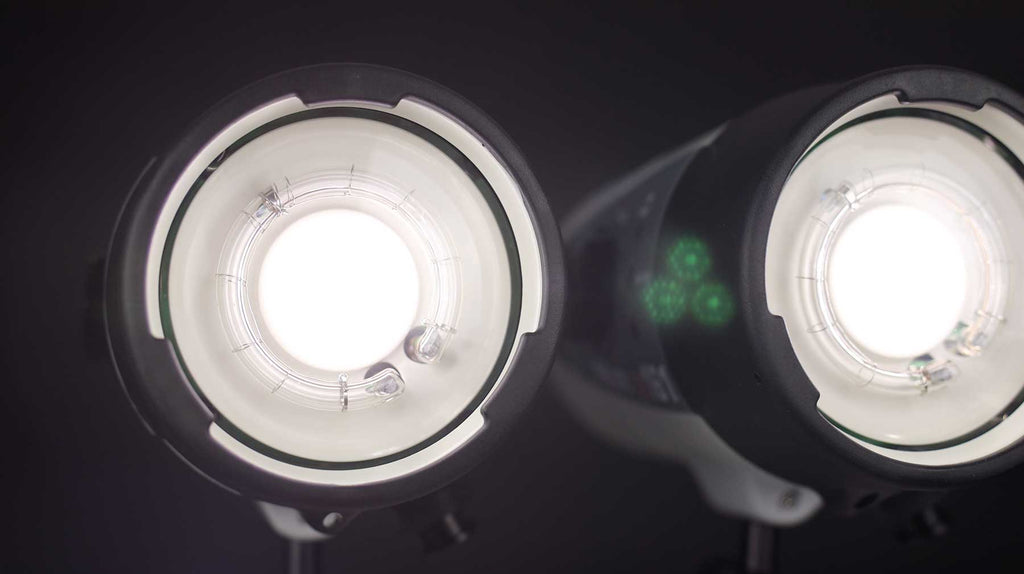
Professional grade strobes typically feature circular flashtubes and high-power rechargeable battery packs. The circular flashtube provides a warmer, more even spread of light. A high-power battery pack provides quick recycle time throughout the day of diving. AA cells on the other hand tend to perform best within the first 100 shots.
TTL strobe exposure is also important for that same reason. TTL is also often called "auto" strobe exposure but it's not to be confused with Auto modes on your camera. It operates the same way your camera's flash does on the surface- the camera does some really quick test flashes when you press the shutter and then adjusts the output of the strobe for the perfect amount of fill light. There are some situations where manual strobe exposure may be desirable, but TTL achieves the best results about 98% of the time.
Conclusion
The complete underwater toolkit requires at least one, ideally two strobes. Without strobes you'll likely be doing a lot of color correction in post-production and will never be able to achieve the depth and vibrancy of the photos you see in the magazines.
When considering where to spend your money, you will get better results by choosing a professional quality strobe over a more expensive camera or housing.
Need advice on selecting the right equipment or using it to get the best images? Contact your personal photo pro - we want to help!
 Jean Rydberg is the President & CEO of Ikelite. She has lived her whole life in landlocked Indianapolis, Indiana, but is no stranger to the water as a daughter of Ikelite’s founder Ike Brigham. She has traveled around the world shooting and testing gear and enjoys new challenges in both photography and diving. Jean loves to learn about the creative ways photographers achieve their visions. More than anything she wants to show aspiring underwater photographers that excellence is attainable with any system. When she's not working she's spending time with her husband and two daughters.
Jean Rydberg is the President & CEO of Ikelite. She has lived her whole life in landlocked Indianapolis, Indiana, but is no stranger to the water as a daughter of Ikelite’s founder Ike Brigham. She has traveled around the world shooting and testing gear and enjoys new challenges in both photography and diving. Jean loves to learn about the creative ways photographers achieve their visions. More than anything she wants to show aspiring underwater photographers that excellence is attainable with any system. When she's not working she's spending time with her husband and two daughters.
Additional Reading
The Right Lens for Every Situation Underwater
When to Use a Compact 8" Dome Port Underwater
When to Change Shutter Speed Underwater
When to Change Aperture Undewater
Why You Need a Fisheye Lens Underwater
The Myth of TTL Strobe Exposure Underwater
Straight vs 45 Degree Magnified Viewfinder for Underwater Shooting











